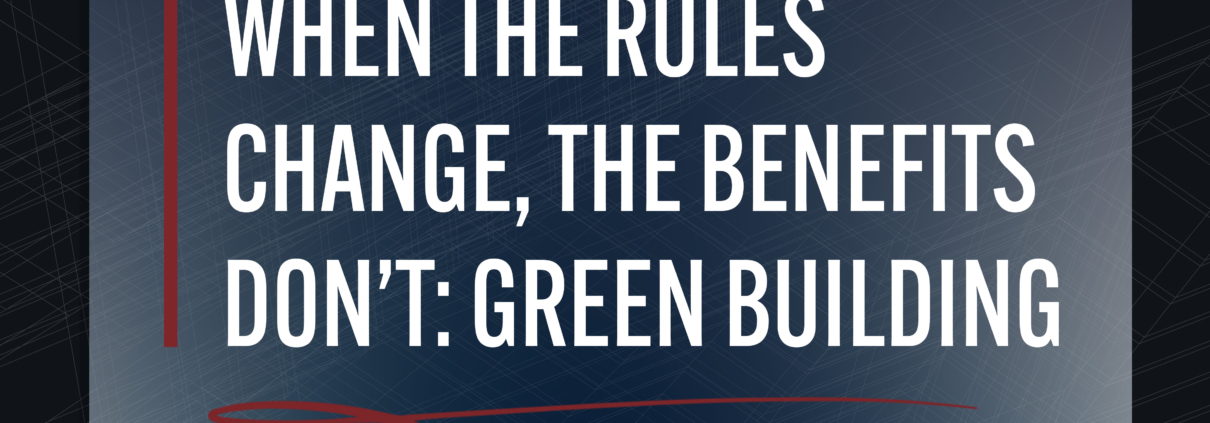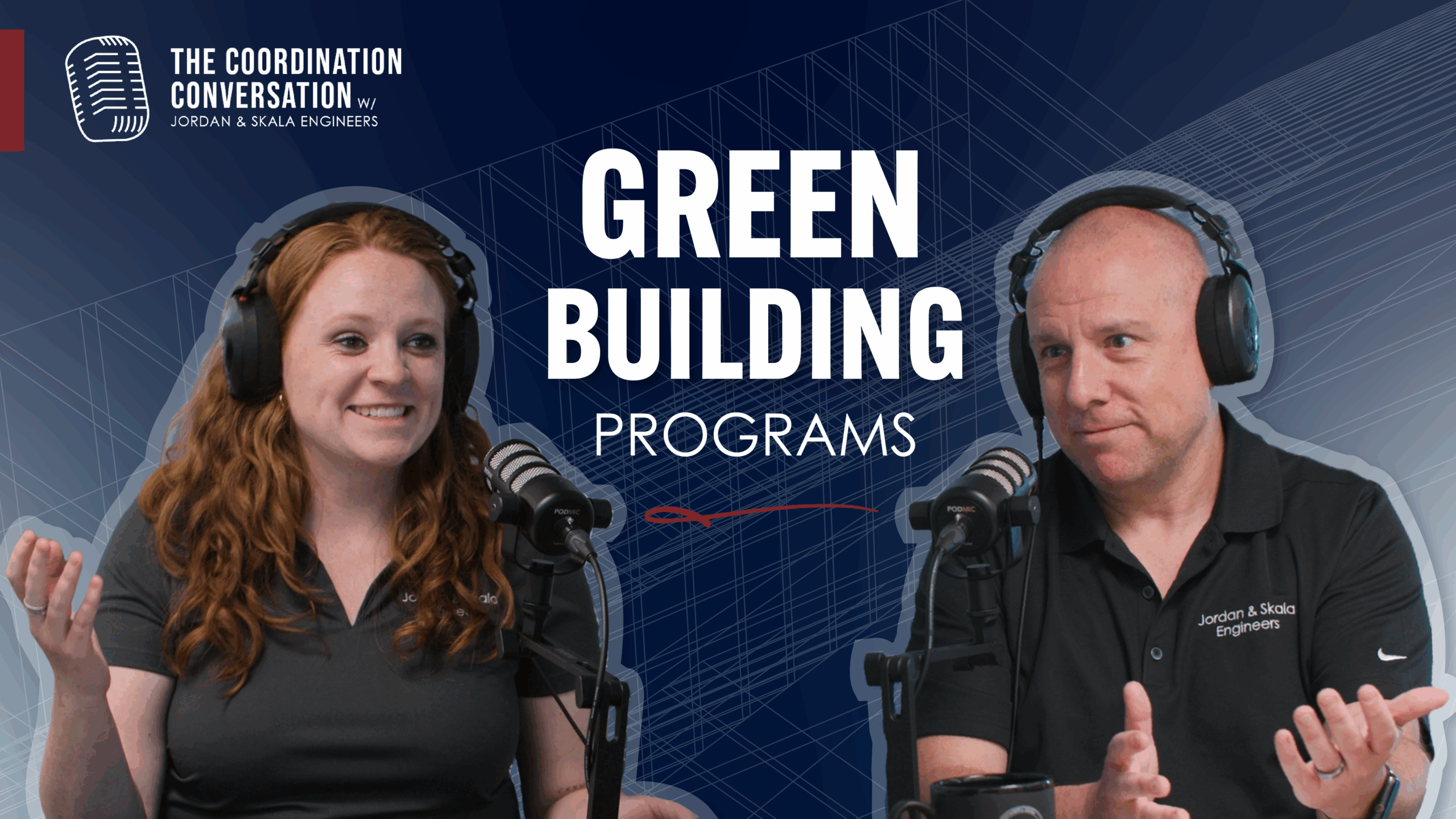When the Rules Change, the Benefits Don’t: Green Building
In this edition of The Coordination Conversation — your website blog companion to our video and podcast series by Jordan & Skala Engineers, we tackle the evolving landscape of green building programs. With changing federal policies, many developers are asking: Do we still need green building programs like LEED or ENERGY STAR? In this episode recap, Jordan & Skala Engineers’ sustainability experts break down why smart design still pays off — regardless of changes at the federal level.
Featured Topics from Our Latest Episode:
1. What’s Happening with Green Building in Federal Policy?
“There’s been a sustained period of several years where there’s been a drive to increase sustainability and energy efficiency in buildings,” Mike explains. “But right now, we’re kind of feeling as though there’s a push against that.”
Key Takeaways:
- Following the enactment of the ‘One Big Beautiful Bill’ on July 4, 2025, key green building incentives—such as the Section 45L Tax Credit—were eliminated. In addition, changes to the HUD Green Mortgage Insurance Premium (Green MIP) program were implemented through administrative action by the HUD Secretary. Together, these federal shifts have removed some financial motivations for developers to pursue green certifications.
- However, changes at the federal level are not the whole story. Many jurisdictions are moving ahead with green building programs and sustainability initiatives, including the adoption of the 2024 IECC and local utility incentives for efficient buildings (CenterPoint, Energy Trust of Oregon, etc.).
2. Why Energy Efficiency Still Pays Off for Developers
From pursuing a formal certification to simply smarter design, energy efficiency is still critical to cost savings. From HVAC optimization to envelope performance, well-executed design choices continue to make a financial impact.
Key Takeaways:
- Utility costs remain a large operating expense for both owners and tenants. Since HVAC systems continue to be the leading source of energy waste in buildings, optimizing these systems offers a clear and immediate financial return.
- Assuming a building will be properly designed or constructed without third-party verification is a costly risk. When our sustainability team is brought in post-construction to troubleshoot performance issues, we often uncover avoidable problems, like poorly installed insulation or envelope failures, that could have been prevented through proactive energy efficiency measures during design.
- Energy modeling is often seen as an extra cost or a fallback when compliance tools like COMcheck or REScheck fall short. But this perception overlooks the intrinsic value that energy modeling brings. Unlike checklist-based tools that require specific prescriptive measures, energy models allow for greater flexibility, enabling trade-offs between systems and materials to meet performance targets. This can lead to smarter design decisions, cost savings, and more accurate insight into long-term building performance.
3. When Should You Pursue a Green Building Certification?
The podcast analyzes the different use cases for programs like LEED, ENERGY STAR, and NGBS. Not every project needs a badge, but for those that do, selecting the right one matters.
Key Takeaways:
- ENERGY STAR gained popularity over the past two years as a qualifying path for the 45L Tax Credit. However, with recent federal changes to 45L, we’re now seeing a shift back toward NGBS as the preferred green building certification for many developers.
- LEED provides certification options for building types like distribution centers and warehouses, something many other programs don’t currently support. However, when applied to multifamily developments, it can be more costly and administratively complex due to extensive documentation requirements.
- Green building certification isn’t limited to new construction. Several programs, like BREEAM In-Use, are specifically designed to recognize and reward efforts to improve the performance of existing buildings.
What This Means for Engineers, Architects & Developers
The takeaway? Design teams must stay fluent in local code, green programs, and performance modeling, whether or not a certification is in play. Even as federal incentives ebb and flow, smart, sustainable design continues to drive ROI, reduce risk, and support high-performance buildings. At Jordan & Skala Engineers, we’re helping clients stay ahead through proactive education, integrated design strategies, and smart coordination across disciplines.
Watch the full discussion to stay ahead of the changes shaping our industry.
Meet Our Speakers

Mike Dawson
Sustainability Client Solutions, Atlanta
Riley Killian
Manager of Sustainability Services, Denver



Leave a Reply
Want to join the discussion?Feel free to contribute!